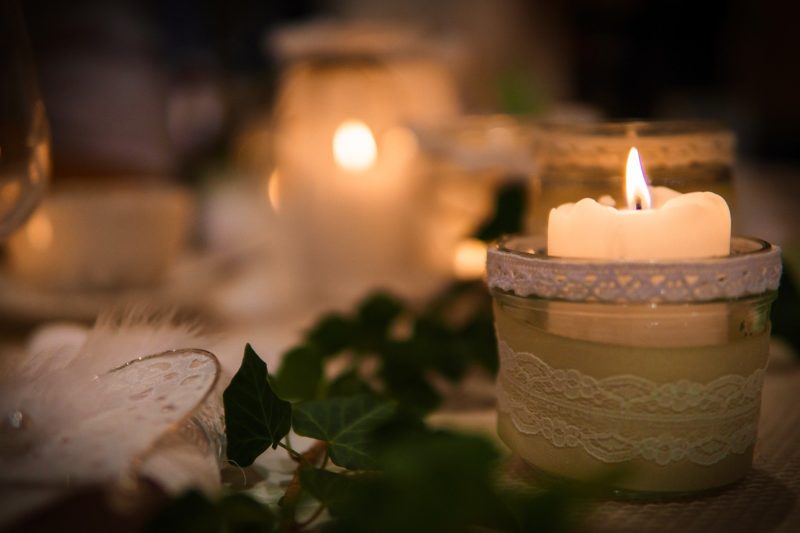Whether you’re making a candle as a present, for yourself, or to sell, it’s important to take it seriously. You will not be able to manufacture a flawless candle in a single day. Even knowing how long does it take to make a candle is important.
In reality, it may take many months to create a candle that not only smells great but is also correctly built. The chemical process occurs as the wax and fragrance oil bond and mixes into one. Others refer to it as a “cure” in candle production.

Consider it like spaghetti sauce, chili, or salsa. The tastes perform better when they’ve had time to mingle with the wax—to “set.” The first step is to just wait before lighting the candle.
How Long Does It Take To Make A Candle?
To answer the question on how long does it take to make a candle, let me tell you, it’s not that long. Most people advocate burning a paraffin-based candle for at least 24 to 48 hours and a soy-based candle for up to a week. However, there are several things you may do while creating the candle to help. Make certain that your fragrance oil is added at the proper temperature.
Follow the manufacturer’s instructions—or, for a decent starting point, 180 degrees F. Make careful to stir it up. It’s amazing how many individuals simply don’t move enough. Stir the fragrance oil into the wax for at least a minute—two minutes is better.
When you pour a candle, two things happen. The wax first hardens into a semi-solid state, after which the fragrance oil “binds” to the wax. Let’s take them one at a time.
The wax hardens to a semi-solid state.
Candles, contrary to popular assumptions, have a semi-solid structure. At room temperature, the fragrance oil is a liquid. Because this does not alter just because it is in a candle.
The overall structure of a candle is part solid (wax), part liquid (fragrance) – a semi-solid. After pouring the candle, the wax solidifies. Cooling causes hardening, and certain waxes continue to harden long after they have been poured.
Because they are polymorphic, “vegetable waxes” such as soy continue to harden throughout their lives. Crystals continue to develop in the wax as time and temperature pass, resulting in a harder wax over time. Other waxes, such as paraffin, attain nearly full hardness after a day or two of being poured.
After the initial cooling, the wax must be changed regularly as part of the curing process. To melt harder and stiffer wax, more heat energy is required. This shift can be significant enough that a wick that performs well in the first two weeks may be too tiny after that time. Softer wax, on the other hand, melts more easily.
The fragrance adheres to the wax.
The binding of fragrance oil to the wax is the second key component of candle curing. Many candle producers believe that combining fragrance oil and wax results in the formation of new material. However, this is not the case.
Fragrance and wax do not react chemically with one another. Understanding what happens when merging scent and liquid wax requires a degree in organic chemistry. Yet figuring it out is still challenging for a few reasons.
To begin, each wax has a unique design. The majority of commercial candle wax comprises multiple additives of varied compositions, and virtually all mixtures are proprietary. Fragrance oil is also enigmatic, with essentially no public information available regarding the contents.
Second, the wide range of wax and scent available on the market confuses this chemical equation even further. But we do know a few facts about what occurs when they are combined. Wax expands as it becomes a liquid and compresses when it cools to become a solid.
This phenomenon causes “wet patches” in container candles. Fragrance and wax will combine as liquids without affecting their chemical contents. Fragrance oil will always be fragrance oil.
Wax remains wax. Cooling wax captures fragrance oil molecules in its structure as it solidifies. The “aromatic” molecules spread out when the wax solidifies.
Excess oil tends to collect in the candle if the fragrance is inadequately combined. Or there is just too much in the wax. Candle curing is the process of continuously hardening wax to properly distribute aroma oils throughout the mixture.
Is it required to cure?
The unofficial argument in the candle-making world is about how long candles should cure before they’re ready. Most candle producers decide whether or not a candle is good based on quantifiable and non-measurable factors. However, it is frequently based on characteristics that are more difficult to measure.
How long should you leave your candles to cure?
Longer curing periods are usually preferable. Why? Most people light candles infrequently, leaving them unlit for weeks at a time.
Your wick test may be deceiving depending on your wax if your initial burns occur before the recommended cure period for your wax. It might affect candle safety. Suggested timeframes are only guidelines. They are not based on scientific evidence, but rather on the aggregate views of countless candle producers throughout the years.
Conclusion on How Long Does It Take to Make a Candle
So, how long does it take to make a candle? Most candlemakers would prefer a quicker cure period, however, this is a sign of impatience. In truth, regardless of curing time, most candles made for others will not be consumed within the first 24 hours. Add to add the time it takes to burn test, which might take weeks at times. If you want to know more tips and guides on candle making, check out our other articles on the site.
